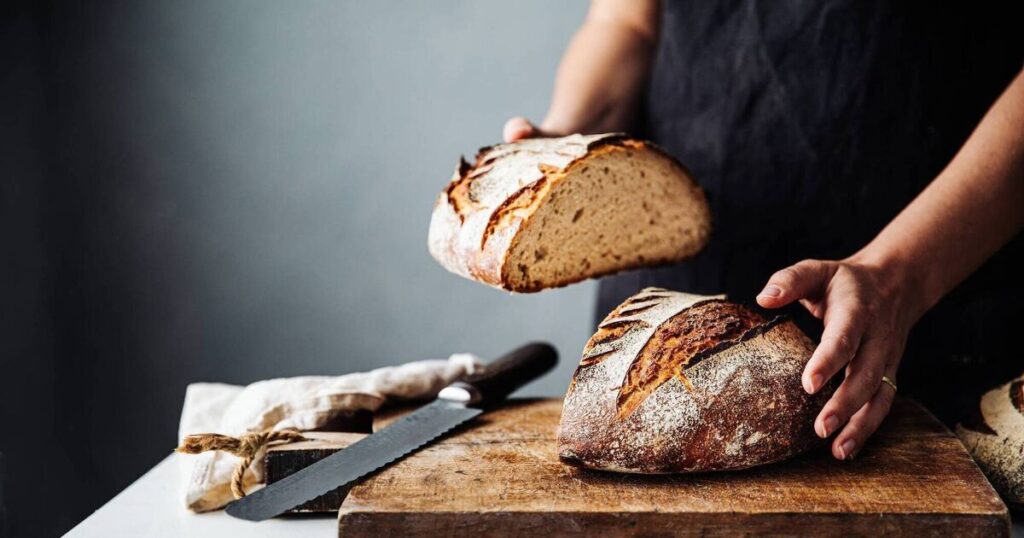Sourdough keeps well and even matures in flavour over days. As the wild yeasts combine with the natural bacteria in flour to ferment, the fermentation process is a lengthy one.
This interaction pre-digests the dough, producing carbon dioxide that promotes the bread’s rising while breaking down the gluten, and explains why some people with suspected gluten intolerance can tolerate sourdough.
It’s difficult to establish how much sourdough goes into a loaf. Some brands add sourdough flavouring, or a small amount of sourdough, along with regular yeast.
I consulted the Food Safety Authority to see what can be labelled as sourdough. There is no ruling. “If a consumer buys the product, it should have the general characteristics of what they expect a sourdough bread to be,” said a spokesperson.
The best way to judge sourdough is over a few days. Those with all sourdough will last a week, while those with faster-rising regular yeast will go stale in a few days, some becoming rock hard, as a fresh baguette does (use for breadcrumbs).
Ciabatta has an open texture with an extra-chewy crust, and this one delivers these genuine Italian elements.
All tasters put this and the sourdough baguettes top of their list. A good introduction to sourdough, the flavour is mild enough to appeal to children.
Chop into cubes for croutons, or dip slices in crunchy salt and olive oil as a sociable starter. Use for sandwiches, lining with lettuce to cover the holes.
A comfortingly short list of ingredients includes malted wheat, wheat flour, sunflower seeds, linseeds, millet, pinhead oatmeal, barley, and rye.
Dried rye sourdough gives it a very light texture, and it lasted well. As there is no salt, it is good for children’s sandwiches.
Adults would have liked a little salt. Children also liked that there is little or no sourdough flavour.
Adult tasters would have liked more, but the natural taste won them over.
With a light, open texture, and a nice, natural mild sourdough flavour, this was described by one taster as “streets ahead” of many. A favourite.
It contains rye flour and wheat flour. Kept well for several days, but this is also one to halve and freeze while still fresh. A good all-rounder.
Not much sourdough flavour, but a good, slightly moist texture and chewy crust with a nutty finish from the seeds.
Many of our rejects were claggy in the mouth due to the addition of soya flour (to make it squeezy) and other additives, but this one tasted like it was made, as it should be, from just flour, water, salt, and sourdough starter.
Kept well for five days.
Made from scratch in the Ballincollig (L&N) supermarket, this stood out for its good crust, slightly malty flavour with some sourdough hints.
We bought it already wrapped and sliced – handy for saving some slices in the freezer for later. It kept for a few days.
Nice, open-textured bread, stocked frozen and finished in-house, where we bought in Ballincollig (not every branch has a bakery).
Not much flavour, but pleasant, with a nice, chewy crust. Unfortunately, it went hard after three days.
Oats, quinoa, and seeds seemed like a good idea to try, as they provide extra protein.
There’s a sting of sourdough too, as if added in for flavour rather than slow development.
Lots of additives – cellulose gum, esters of fatty acids, diphosphates, calcium acetate – lost some of the tasters’ approval.
They liked the taste and texture, though. We bought in the Bishopstown, Kinsale Road branch.
Two rolls, vacuum-packed separately, are pre-baked, and we finish them at home in the oven.
The label states there’s just a little sourdough which is not surprising as it’s not in the taste or the texture, which is more like regular baguette.
There is also bread yeast, reflected in the texture with a crisp crust like a regular baguette and a tasty, light crumb. Goes stale quickly once baked.


